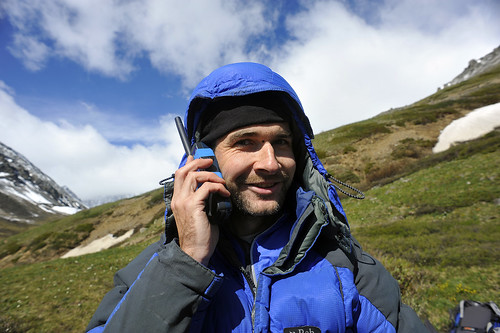Satellite phones, or ‘satphones’, are simply phones that send and receive signals to and from satellites rather than through cables or via phone masts. They are useful on expeditions and for remote travel because, with the right satphone, you can make and take calls from anywhere in the world.
Below is a brief introduction to satellite phones including what they can do (such as sending emails and receiving text messages), how much they cost to buy, hire and call with, and a comparison of different providers of satellite phones and networks (Iridium, Thuraya and Inmarsat).
[divide]
Satphone Facilities – Calls, Texts & Data
Although the method varies between models and providers, most phones are capable of the following:
- Making and receiving phone calls to landlines, mobile phones and other satphones;
- Sending text messages to mobile phones, email addresses and other satellite phones;
- Receiving text messages from other satellite phones and sent free through the provider’s website;
- Sending and receiving small amounts of data when linked to a computer (e.g. emails and small attachments).
Buying & Hiring Satphones
If you want to take a satphone on an expedition with you then you can either buy or hire one. Handsets cost around £500-£1000 and upwards to buy. Hire costs are below. Call rates, usually billed in US dollars, are typically around £1/minute or so though do vary.
You can find sat phones for hire and sale easily through Google but here is a brief overview from a few minutes of my own Googling:
UK satphone suppliers
- Global TeleSat: £250-500 deposit, £5/day, £1.50/minute (cheaper if you pre-pay).
- Mobell: No deposit, £8-11/day, £1.39-1.79/minute. Iridium only.
- Cellhire: Deposit £150-500, £149-199/month, £0.85-1.90/minute. Also hire Inmarsat BGANs.
- Satphone.co.uk: £500 deposit, £10-20/day including some minutes, £1.40-1.60/minute. They also rent Iridium Pagers and Inmarsat BGANs.
US satphone suppliers
- Blue Cosmo – modern handsets with Bluetooth and USB from $649. Neat table comparing different models.
[divide]
Iridium
Iridium are the longest running provider of satellite phones and network. They have “truly global coverage” and are the only provider that covers the Arctic, Antarctica and both poles.
They rely on a large number of ‘low earth orbit’ satellites which means that tall buildings, trees and mountains can block signal. The satellites are also not geostationary which means that signal can vary even whilst you’re standing still and calls can quite frequently cut out. Voices through the Iridium network tend to sound a bit robotic.
Models: Iridium 9505A, Iridium 9555, Iridium Extreme (view comparison table)
Inmarsat
A recent competitor to Iridium, Inmarsat covers most of the globe except for the top and bottom i.e. Arctic and Antarctica. Unlike Iridium, they use just a couple of geostationary satellites with a much higher orbit which means calls are dropped less often and less subject to being blocked by tall objects.
Models: Inmarsat IsatPhone Pro (view comparison table)
(Shortly after Inmarsat enter the marked, both Inmarsat and Iridium commissioned their own “independent” reports comparing their own satphone to the competitors. Needless to say, they each found opposite results. You can view the PDFs online: Inmarsat’s TelAstra report and Iridium’s Frost & Sullivan)
Thuraya
Thuraya have a similar geostationary network set up to Inmarsat. Thuraya phones tend to be smaller, lighter and with more features like colour screens, the ability to use normal GSM SIM cards, multi-page text messaging and faster data transfer. Their satellite coverage is regional however so you should check whether it covers where you want to go.
There is a useful collection of satellite coverage maps at Global Telesat.
Models: Thuraya XT, Thuraya SG2520 (view comparison table)
[divide]
Other Satellite Networks
Globalstar, who make the Spot trackers, also offer a satellite network and handsets, and Orbcomm have a network too.
Other Satellite Technologies
Communication via satellite is used in some other technologies beyond satphones including the following:
- Pagers: Operates exactly as a normal pager only using satellites for signal. We used these very effectively on large scale expeditions for BSES.
- Broadband terminals: It is possible to get broadband speed internet connections via satellite through Inmarsat BGAN, Thuraya IP and Iridium OpenPort. The units are chunky and it can be expensive to run.
- Trackers: Some GPS trackers, such as Yellow Brick and Spot, also use satellite networks to communicate.

What do you think? Please do add your thoughts below…